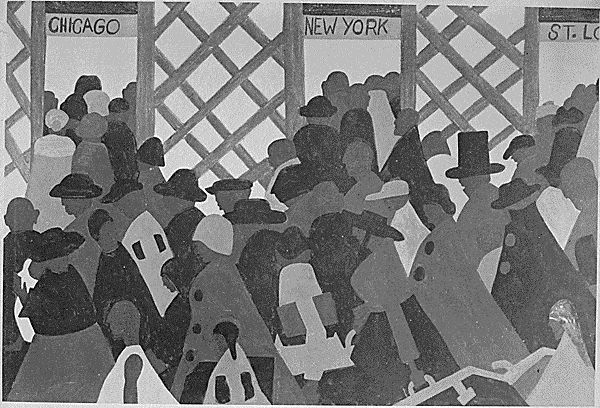During the early 1900s through 1970, African Americans migrated from the deeply segregated agricultural South to the industrial, less segregated Midwest and North. Families hoped that escaping from Jim Crow to a city with growing industrial jobs would create better economic opportunities for future generations.
This phenomenon, dubbed the Great Migration, birthed many legendary success stories including James Earl Jones, Zora Neale Hurston, and Jackie Robinson. These proud individual legacies can create an impression that the Great Migration brought widespread and lasting economic liberation. But did it? Not quite, Dr. Ellora Derenoncourt has found in the important paper “Can You Move to Opportunity? Evidence From the Great Migration.” Though there might have been an initial increase in opportunity, the Princeton scholar found, many African American grandchildren and great grandchildren of these migrants today are financially struggling, seeing little bridging of Black/white economic inequality.
There was an immediate racist blowback against African Americans for trying to be a part of the industrial economy in the early 20th century. Increased economic competition, the post World War I recession and national anti-Black animus was the context from which white Americans, many veterans of World War I and many recent European immigrants, formed mobs to attack African American communities in what NAACP activist James Weldon Johnson called the “Red Summer.” During that year of 1919, white rioters, police and lynch mobs killed and injured hundreds of Black people and left more than 1,000 homeless.
Even with the end of the “Red Summer,” an economic violence against African Americans transformed the industrial North and Midwest from cities of great opportunity in the early 20th century to segregated “inner cities.” The descendants of the Great Migration were left behind as economic opportunity attached itself to white residents’ flight from those urban cores. As Dr. Derenoncourt writes:
“[L]arge mid-century shifts in the racial composition of northern cities altered the effects locations had on children, turning opportunity locations into opportunity deserts, particularly for Black families. A mix of de-industrialization, ghettoization of African Americans, a white flight, particularly of economic resources away from African Americans, and state (disproportionate police action and incarceration) and civilian violence to maintain defacto socio-economic segregation continued African American economic marginalization.”
The transformation from lands of opportunity to lands of racialized poverty in industrialized cities happened to such an extent “that outcomes for the third generation in the North look no better today than for Black children growing up in the South,” Derenoncourt concludes.
The equal lack of opportunity in the “North” and the “South” is the foundation of the Black/white wealth divide today, where African Americans have a median wealth of $9,000 compared to white median wealth of $160,000. There has been little bridging of this racialized economic chasm from 1970 when the Great Migration came to a close. The end of the Great Migration was a realization that the opportunity in non-southern Black cities was an illusion.
In fact African Americans have been moving back South since about 1970, particularly to major Southern cities. African Americans continue to be willing to relocate to find greater opportunity or at least a better quality of life. But sadly the nation has yet to find the will to move investment and resources at a substantive and enduring level that bridges Black/white economic inequality regardless of US geography.
As a national “reckoning on race” becomes a part of yesterday’s headlines and the calls to fight inflation through raising unemployment and lowering pay become the dominant voices in mainstream political discussion, taking major steps toward bridging racial economic inequality appears as distant as Detroit, Michigan from rural Mississippi.
Dedrick Asante-Muhammad is NCRC’s Chief of Membership, Policy and Equity.
Briana Shelton is NCRC’s Membership, Policy and Equity intern.
Photo is a public-domain image from the artist Jacob Lawrence’s series of paintings depicting the Great Migration.



